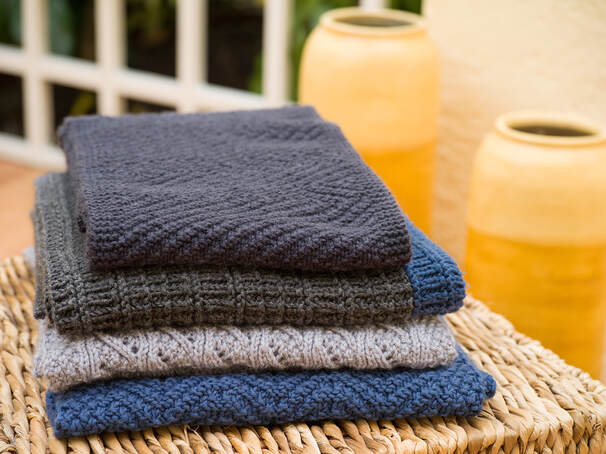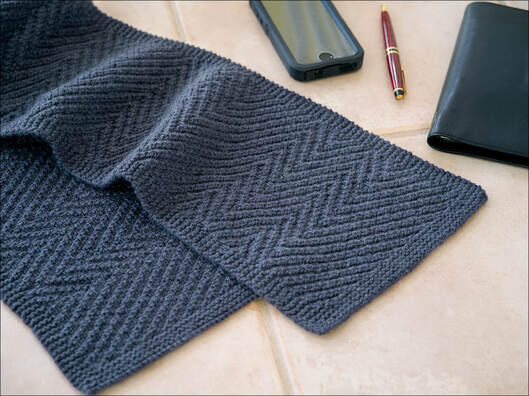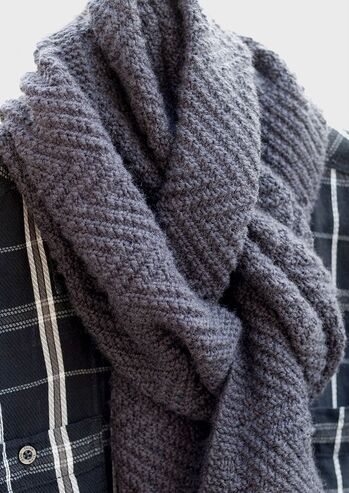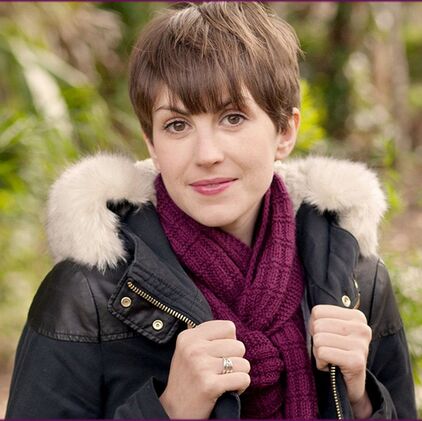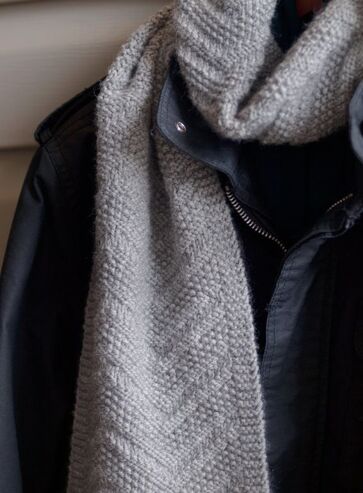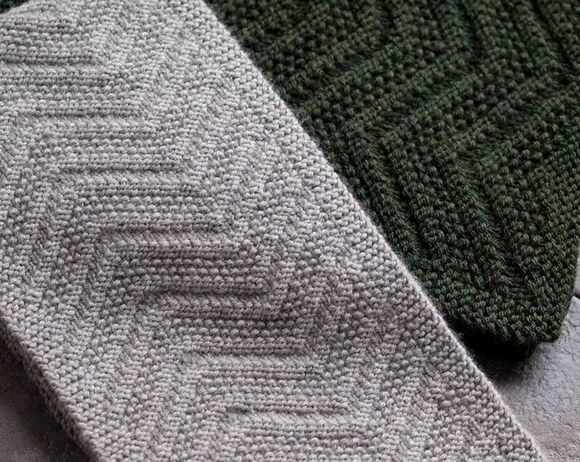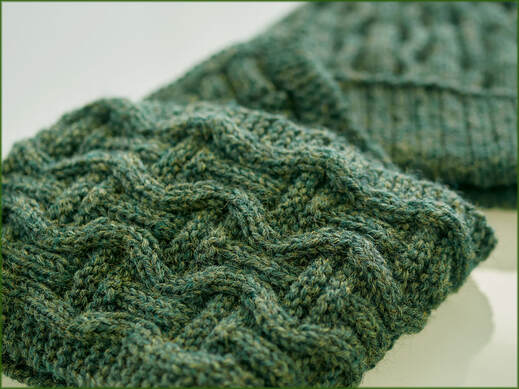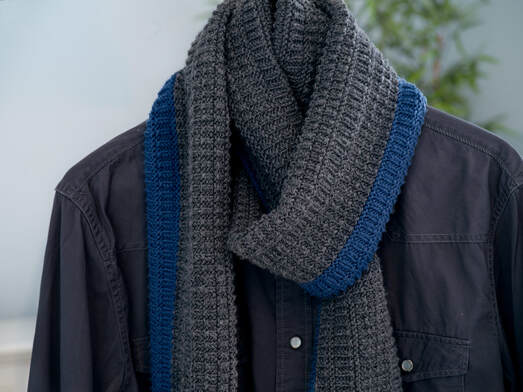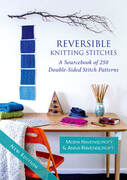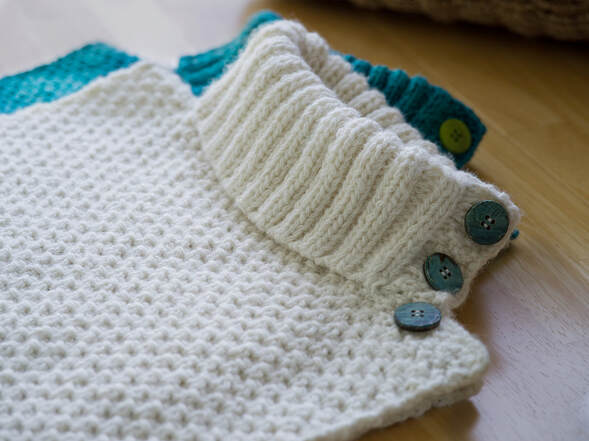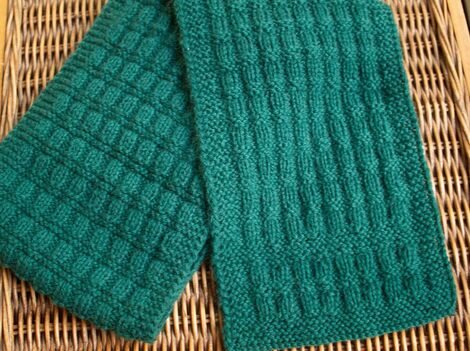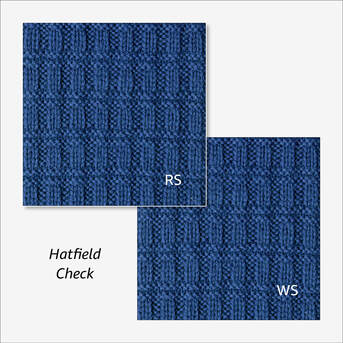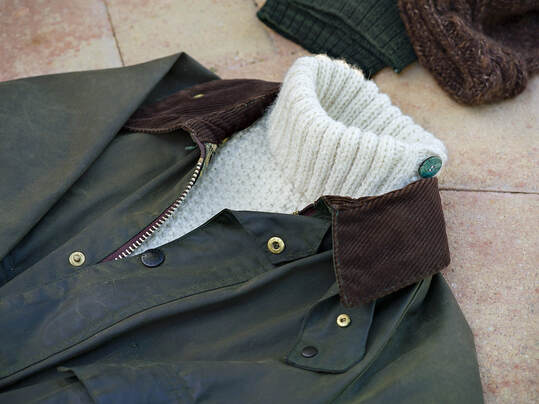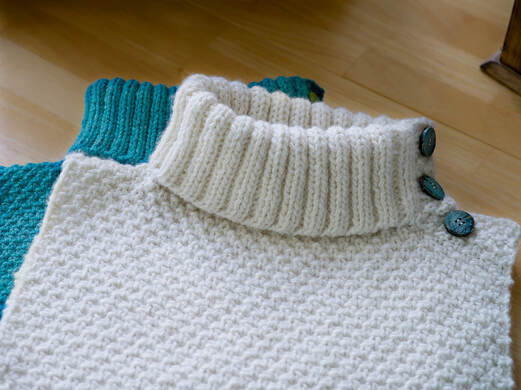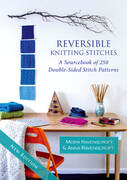We have reached the start of winter, with heavy snows falling in the Boston area. Even further south, the cold weather is sure to have everyone looking for a scarf or hat to keep warm. If you have been following my Autumn Accessories series so far, you will know that I have been looking at cowls, neckwarmers and other small items to knit now ready for the coming winter.
However, we can’t leave the topic of neckwear without mentioning scarves – that absolute necessity for any wintry clime. So if you fancy knitting a new scarf either for yourself or a loved one as a gift, then how much yarn will you need?
Well, this will depend on a number of factors but the main variables are:
However, we can’t leave the topic of neckwear without mentioning scarves – that absolute necessity for any wintry clime. So if you fancy knitting a new scarf either for yourself or a loved one as a gift, then how much yarn will you need?
Well, this will depend on a number of factors but the main variables are:
- how wide the scarf is
- how long it is
- the depth of texture
- and the yarn density
So let’s look at a few examples, starting with one of my favourite men’s scarves, the Lamberhurst Scarf. This can be worked in either a DK yarn or with two ends of a sportweight yarn held together, which gives a thicker Winter-weight scarf. However, I’d like to start by looking at just the lighter-weight versions, as in the example above. This has been worked in a soft merino DK yarn and has what I would term a medium texture.
There are two lengths of DK scarves included in the pattern and the shorter version measures 23cm/9 ins wide x 130cm/51 ins long. This gives a neat, draping style. The sample I worked used 198gm/7oz of yarn which is 474m/518 yds of wool.
That left almost nothing from 4 balls of yarn so I would suggest that you would be wise to have a 5th ball of yarn on hand, especially if you might want to add a little bit more to the length of the scarf.
There are two lengths of DK scarves included in the pattern and the shorter version measures 23cm/9 ins wide x 130cm/51 ins long. This gives a neat, draping style. The sample I worked used 198gm/7oz of yarn which is 474m/518 yds of wool.
That left almost nothing from 4 balls of yarn so I would suggest that you would be wise to have a 5th ball of yarn on hand, especially if you might want to add a little bit more to the length of the scarf.
The longer DK version of the scarf is 173cm/68 ins long, which is great for wrapping around the neck to ward off those pesky winter winds. However, it is also a little slimmer with a width of just 19cm/7.5 ins. The combination of a slighter slimmer width but longer length means that it only uses a bit more yarn, 210gm/7.4oz which is 499m/546 yds.
This is, of course, all to do with the total area of knitting. I was mentioning Maths a couple of blogposts ago, and it’s back again!
So this is a good way to make your yarn go further. If you know you would like a lovely long scarf, then you might want to plan for a slimmer width.
This is, of course, all to do with the total area of knitting. I was mentioning Maths a couple of blogposts ago, and it’s back again!
- The small Lamberhurst is 23x130cm = 2,990cm²,
- but the larger one is 19x173cm = 3,287cm²,
- ie the area of knitting is not much more even though is over 40cm/16 ins longer.
So this is a good way to make your yarn go further. If you know you would like a lovely long scarf, then you might want to plan for a slimmer width.
Let’s look at another scarf – this time for the ladies: the Elizabeth Scarf. This is a slim scarf but worked with a good length so you can wrap it around your neck several times or work an elaborate fold for a fashion look.
The scarf shown in the photo is worked in a DK weight and measures just 16.5cm/6.5 ins wide but has a lovely length of 185cm/72 ins. It used 198gm/7.0 oz of yarn which is 452m/487 yds, so very similar to the Lamberhurst Scarf examples even though it is much longer.
So, you can probably see that if you have perhaps 4 or 5 balls of a DK yarn (so about 200-250gm/7-9oz), you should get a good-sized scarf. With 4 balls, it would perhaps be a bit more of a skinny scarf or a slightly shorter one, but 250gm/9oz should give you a nice length or a bit of a thicker texture.
The scarf shown in the photo is worked in a DK weight and measures just 16.5cm/6.5 ins wide but has a lovely length of 185cm/72 ins. It used 198gm/7.0 oz of yarn which is 452m/487 yds, so very similar to the Lamberhurst Scarf examples even though it is much longer.
So, you can probably see that if you have perhaps 4 or 5 balls of a DK yarn (so about 200-250gm/7-9oz), you should get a good-sized scarf. With 4 balls, it would perhaps be a bit more of a skinny scarf or a slightly shorter one, but 250gm/9oz should give you a nice length or a bit of a thicker texture.
Now let’s have a look at thicker yarns. Another man’s scarf that I like to work because it has such a dynamic pattern is the Beckenham Scarf. I have made a number of these and although it is nominally a man’s scarf, I have actually worked this one for ladies too with good results. Again there are two versions, a Worsted-weight and a chunky, and each of those can be worked in 3 widths.
Concentrating on the Worsted-weight version for the moment, the widest of these is 21.5cm/8.5 ins wide and 185cm/72 ins long. This used 237gm/8.4oz of yarn, which is 475m/520 yds.
This is 5 balls of yarn, but again you might be advised to have an extra ball on hand just to make sure you have enough to complete the design. The pattern has quite a long repeat, so it would be very annoying to run out of yarn at the end.
Concentrating on the Worsted-weight version for the moment, the widest of these is 21.5cm/8.5 ins wide and 185cm/72 ins long. This used 237gm/8.4oz of yarn, which is 475m/520 yds.
This is 5 balls of yarn, but again you might be advised to have an extra ball on hand just to make sure you have enough to complete the design. The pattern has quite a long repeat, so it would be very annoying to run out of yarn at the end.
Now let's turn our attention to the chunky version of the Beckenham Scarf. The photo above shows the wide version of the pattern, with the grey scarf in front worked in Worsted-weight yarn while the green scarf behind is in Chunky. The thicker scarf is the same length (185cm/72 ins) as the Worsted-weight version, but now measures 28cm/11 ins wide and used 385gm/13.6oz of yarn.
However, here’s a surprising thing: when I checked the yardage I found this was exactly the same as for the Worsted-weight version, 475m/520 yds! Now, although at first that surprised me that the number should come out to be identical with the Worsted-weight scarf, somehow once I thought about it then it wasn’t so surprising after all. Indeed, it is often said that it is better to think about how many metres/yards of yarn you need for a project rather than the weight or the number of skeins.
This is especially true with heavier-than-usual yarns. Yarns can vary enormously in their density, as I found when I used to do more hand-spinning. The yarn was lovely, but garments I made from hand-spun tended to be much heavier because the yarn was denser. To be honest, that was probably my inept spinning and you might get lighter yarns than I did! However, you still need a certain yardage to make a scarf or sweater, even if the yarn weighs more.
So looking at the metreage/yardage for the above scarf examples, you could say that about 500-550m/550-600 yds of wool will make a fairly slim, medium-long scarf with a medium texture.
However, here’s a surprising thing: when I checked the yardage I found this was exactly the same as for the Worsted-weight version, 475m/520 yds! Now, although at first that surprised me that the number should come out to be identical with the Worsted-weight scarf, somehow once I thought about it then it wasn’t so surprising after all. Indeed, it is often said that it is better to think about how many metres/yards of yarn you need for a project rather than the weight or the number of skeins.
This is especially true with heavier-than-usual yarns. Yarns can vary enormously in their density, as I found when I used to do more hand-spinning. The yarn was lovely, but garments I made from hand-spun tended to be much heavier because the yarn was denser. To be honest, that was probably my inept spinning and you might get lighter yarns than I did! However, you still need a certain yardage to make a scarf or sweater, even if the yarn weighs more.
So looking at the metreage/yardage for the above scarf examples, you could say that about 500-550m/550-600 yds of wool will make a fairly slim, medium-long scarf with a medium texture.
Another thing that affects the amount of yarn used will be the depth of the texture. So to illustrate that, here is the Grantchester Scarf. This is a deeply-textured scarf also worked in a Worsted-weight yarn. Because of the deep squishy texture, you don’t actually need to work such a long scarf for the same amount of cushy warmth.
The scarf pictured here is a neat style suitable for cycling. This is just 20cm/8 ins wide and only 120cm/48 ins long, so is quite short when compared to the previous examples. However, it is super cozy as there is 166gm/6oz of wool packed in there. This is 340m/365 yds of yarn.
Let's translate that into a direct comparison with the Beckenham Scarf. That measured 21.5x185cm/8.5x72 ins and needed 237gm/8.4oz of yarn (475m/520 yds).
If we worked a Grantchester Scarf with those same dimensions, then we would need 275gm/9.7oz of yarn, or 561m/605 yds, so the rich texture has used yarn up at a much faster rate.
Again from the Mathematical point of view, that is logical – we are, after all, knitting a 3D object! So although we have spoken about the area of knitting above, it would probably be more accurate to say that we should think about the volume (width x length x depth). So a richer, deeper texture will need more yarn.
The scarf pictured here is a neat style suitable for cycling. This is just 20cm/8 ins wide and only 120cm/48 ins long, so is quite short when compared to the previous examples. However, it is super cozy as there is 166gm/6oz of wool packed in there. This is 340m/365 yds of yarn.
Let's translate that into a direct comparison with the Beckenham Scarf. That measured 21.5x185cm/8.5x72 ins and needed 237gm/8.4oz of yarn (475m/520 yds).
If we worked a Grantchester Scarf with those same dimensions, then we would need 275gm/9.7oz of yarn, or 561m/605 yds, so the rich texture has used yarn up at a much faster rate.
Again from the Mathematical point of view, that is logical – we are, after all, knitting a 3D object! So although we have spoken about the area of knitting above, it would probably be more accurate to say that we should think about the volume (width x length x depth). So a richer, deeper texture will need more yarn.
These are then, the main factors that will determine how much yarn you need to have on hand to work a scarf:
So it follows that you will need to use more yarn if you wish to create a big-volume scarf which is wider, longer, and/or has more texture.These are all factors that will increase the amount of yarn needed. If we look at the Cambourne Scarf, then you will see that this ticks all three of those boxes! It has a lovely deep texture and the largest scarf is 190cm/75 ins long and a generous 26cm/10.25 ins wide.
The Cambourne Scarf is worked lengthwise and has a feature contrast coloured stripe at one side. For the largest size, I used 322gm/11.4oz of the Main Colour and 60gm/2.1oz of the Contrast Colour, so a total of 382gm/13.5oz of yarn, 688m/752 yds. So if you would like to make a larger and/or wider scarf for that multi-wrap fashion look, then I would suggest you allow about 650-750m, say 700-800 yds of yarn.
Of course these are just guidelines and the actual amount you need will depend on the particular yarn, the fibre content and so on. The above examples are all in wool or wool mixes, and you may well find that cotton or other fibres may not work quite the same.
In any case, it’s always a good idea to have extra yarn on hand just in case you find your knitting uses yarn up at a faster rate that in the pattern – everyone’s knitting is unique, and what works for one person may not work for you. You can always make a hat with the leftovers!
If you would like some more suggestions for scarf lengths and widths then please see my earlier blogpost, "How long shall I make this scarf?".
I hope that has given you some good ideas for using your stash or recent sale yarn purchases for some fabulous new scarves. Then you can go and play in the snow! If you'd like more information about any of these scarves, then please have a look at my pattern store here. All the patterns are available for instant download so you can get knitting straight away.
Next time I’ll be back with a look at some fingerless mitts to keep you warm on frosty days.
Until then - Happy Knitting!
Moira
- A skinny scarf will use less yarn than a wider one.
- A longer scarf will need more yarn than a shorter version.
- And a deep, well-textured scarf will use yarn up faster than one with a medium or fine texture.
So it follows that you will need to use more yarn if you wish to create a big-volume scarf which is wider, longer, and/or has more texture.These are all factors that will increase the amount of yarn needed. If we look at the Cambourne Scarf, then you will see that this ticks all three of those boxes! It has a lovely deep texture and the largest scarf is 190cm/75 ins long and a generous 26cm/10.25 ins wide.
The Cambourne Scarf is worked lengthwise and has a feature contrast coloured stripe at one side. For the largest size, I used 322gm/11.4oz of the Main Colour and 60gm/2.1oz of the Contrast Colour, so a total of 382gm/13.5oz of yarn, 688m/752 yds. So if you would like to make a larger and/or wider scarf for that multi-wrap fashion look, then I would suggest you allow about 650-750m, say 700-800 yds of yarn.
Of course these are just guidelines and the actual amount you need will depend on the particular yarn, the fibre content and so on. The above examples are all in wool or wool mixes, and you may well find that cotton or other fibres may not work quite the same.
In any case, it’s always a good idea to have extra yarn on hand just in case you find your knitting uses yarn up at a faster rate that in the pattern – everyone’s knitting is unique, and what works for one person may not work for you. You can always make a hat with the leftovers!
If you would like some more suggestions for scarf lengths and widths then please see my earlier blogpost, "How long shall I make this scarf?".
I hope that has given you some good ideas for using your stash or recent sale yarn purchases for some fabulous new scarves. Then you can go and play in the snow! If you'd like more information about any of these scarves, then please have a look at my pattern store here. All the patterns are available for instant download so you can get knitting straight away.
Next time I’ll be back with a look at some fingerless mitts to keep you warm on frosty days.
Until then - Happy Knitting!
Moira
Last Blogpost: On trend with short scarves and buttoned neckwarmers Autumn Accessories Series #1: Autumn Accessories Next Up: Fingerless Mitts for frosty days Our book: Reversible Knitting Stitches My Website: www.wyndlestrawdesigns.com |
Keywords: Pattern Notes/Scarves, Autumn Accessories Series,
autumn, #autumnaccessories, scarf, scarves, meterage, yardage, yarn, wool, DK weight, worsted weight, chunky yarn, zR-231114
autumn, #autumnaccessories, scarf, scarves, meterage, yardage, yarn, wool, DK weight, worsted weight, chunky yarn, zR-231114
